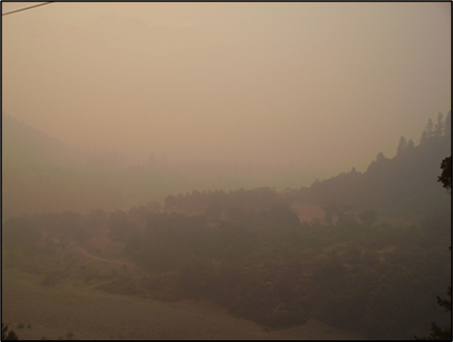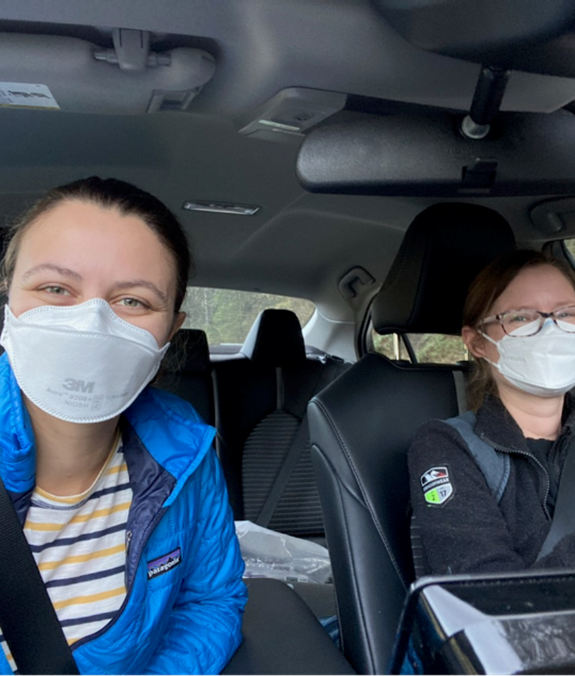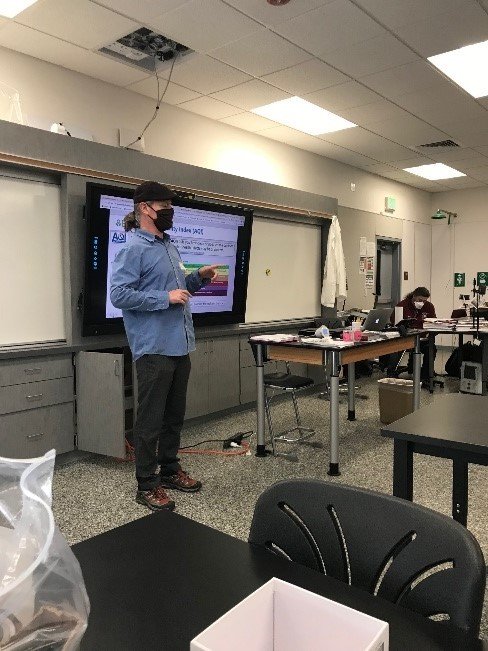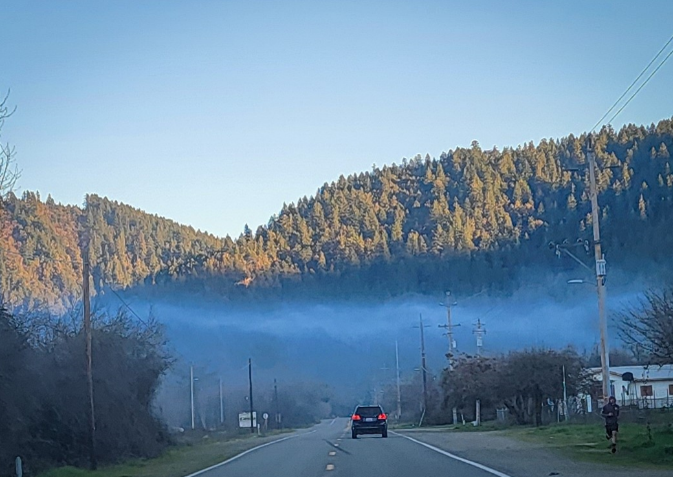In the Field with EPA: Monitoring the Impact of Wildfires and Woodsmoke on Indoor Air Quality
Published April 12, 2022
EPA researchers are working with partners on a multi-faceted study to develop new solutions and approaches for reducing wildfire smoke exposures. For the field research portion of the study, EPA scientists are partnering with the Missoula City-County Health Department in Montana, University of Montana, and the Hoopa Valley Tribe in California. The research is focused on reducing exposure to fine particulate matter (PM2.5), a main component of smoke that can cause health problems at elevated concentrations, especially for those with lung or cardiovascular disease. To learn more about air quality during smoky conditions, scientists placed portable sensors outside and inside commercial and public buildings in Missoula and Hoopa that are impacted by wildfire smoke.

The image above shows hazardous air quality conditions during the Red Salmon Complex Fire in October 2020 in Hoopa Valley, CA.
Throughout the pandemic, EPA researchers and their partners had to get creative to keep their research going. The field studies in Missoula and Hoopa were significantly disrupted by the COVID-19 pandemic as community and Tribal partners assumed new pandemic responsibilities and EPA travel was largely prohibited. Researchers relied on partners to check on air sensors, download data, and troubleshoot equipment issues, as their time permitted.

With EPA facilities closed, preparations for field studies included bringing much of the equipment to researchers’ homes to investigate indoor air sensor operation, perform initial quality assurance and quality control checks, and to prepare equipment for shipping to partners in Missoula and Hoopa.

This work was overlaid on other aspects of the pandemic, such as virtual education, leading to some very full houses and some great opportunities to learn about the sources of indoor air pollution firsthand. The photos above show PurpleAir sensors being tested in a researcher’s home prior to deploying them for the field study.

A new study component, ASPIRE-Health, was added in 2021. Pilot studies in conjunction with the Hoopa Valley Tribe focused on evaluating the effectiveness of do-it-yourself (DIY) and commercial air cleaners to improve indoor air quality in residences and protect health during smoke events related to wildland fires and residential woodburning. EPA researchers were able to travel to Hoopa beginning in September 2021 to visit participant households and to install equipment. Travel required additional approvals and heightened safety procedures to ensure that researchers and study participants minimized their risk of exposure to COVID. In this photo, EPA researchers Julia Carlstad and Amara Holder are on their way to Hoopa for the wintertime ASPIRE-Health pilot study.

The partners in this study have been essential. In the image above, Brian McCaughey of the Hoopa Valley Tribe shares information about air pollution and air sensors used in the Wildfire ASPIRE Study with Hoopa Valley High School students.

Once all of the components of the study are complete, the research findings are expected to help communities prepare for wildfire smoke and provide answers about indoor air quality and air cleaning devices. The image above shows Hoopa Valley Tribal lands impacted by woodsmoke on February 3, 2022.
